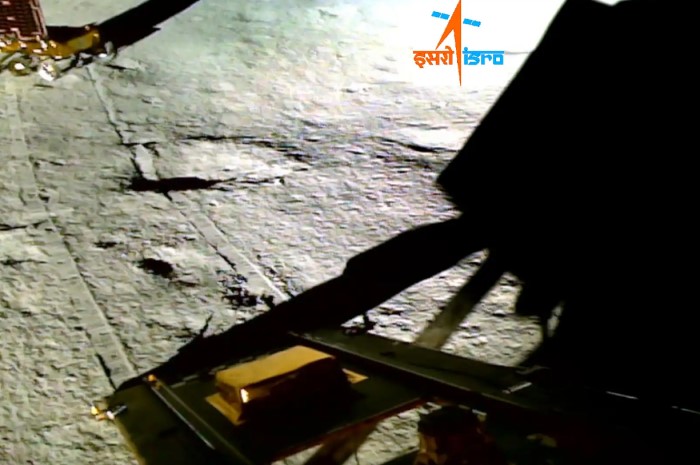On August 23, India made history. Its Chandrayaan-3 lander successfully touched down on the Moon's south pole!
Run by the Indian Space Resource Organization, or ISRO (India's space agency), this event was a sweet victory for the country. First, it made up for the disappointment of Chandrayaan-2, which crashed on September 6, 2019.
Second, it marked the first-ever landing in a lunar polar region. The south pole is a vast, unexplored territory and is full of unknowns. Many experts believe that this area could be a source of water that could be used by future human missions in NASA's lunar Artemis program. In fact, all of the places that NASA is thinking of landing for Artemis are around the south pole.
Now the world's astronomers and space agencies are watching Chandrayaan-3's rover, called Pragyan, as it explores this new territory.
Chemistry of the Moon
Only a week into its mission, Pragyan has already begun reporting back with information. Using lasers, it has been able to learn some of the elements present at the south pole.
Here is a tweet where they show their findings.
Chandrayaan-3 Mission:
In-situ scientific experiments continue .....
Laser-Induced Breakdown Spectroscope (LIBS) instrument onboard the Rover unambiguously confirms the presence of Sulphur (S) in the lunar surface near the south pole, through first-ever in-situ measurements.… pic.twitter.com/vDQmByWcSL
— ISRO (@isro) August 29, 2023
Many of the elements that the Pragyan rover found were expected to be there. These include aluminum, iron, calcium, chromium, and titanium, as well as very small amounts of manganese, silicon, and even oxygen. This is not breathable oxygen in an atmosphere, though—it is only found within the surface.
But sulphur is very interesting discovery to scientists. This element is normally left behind after volcanic activity. Finding it here suggests that at one point, the Moon had active volcanoes. Neat!
The search is on

Wheee! The Pragyan rover wheeling away from the Vikram lander. Pragyan is the vehicle that will do the actual exploring of the surface. (ISRO)
Still, the main reason for the Chandrayaan-3 mission is to hunt for frozen water. It will spend the next two weeks examining the surface, hoping to locate it.
It searches with a laser system called LIBS, which stands for Laser-Induced Breakdown Spectroscopy. The laser turns what it hits into a hot plasma (or ionized gas). It then reads the plasma to learn what elements are found within the rock and dirt on the surface.
Will it find the water that scientists believe is there? We're keeping an eye on it!
 The lander of the Chandrayann-3 mission is called Vikram. This is it on its landing site, as seen by its rover, Pragyan. (ISRO)
The lander of the Chandrayann-3 mission is called Vikram. This is it on its landing site, as seen by its rover, Pragyan. (ISRO)








